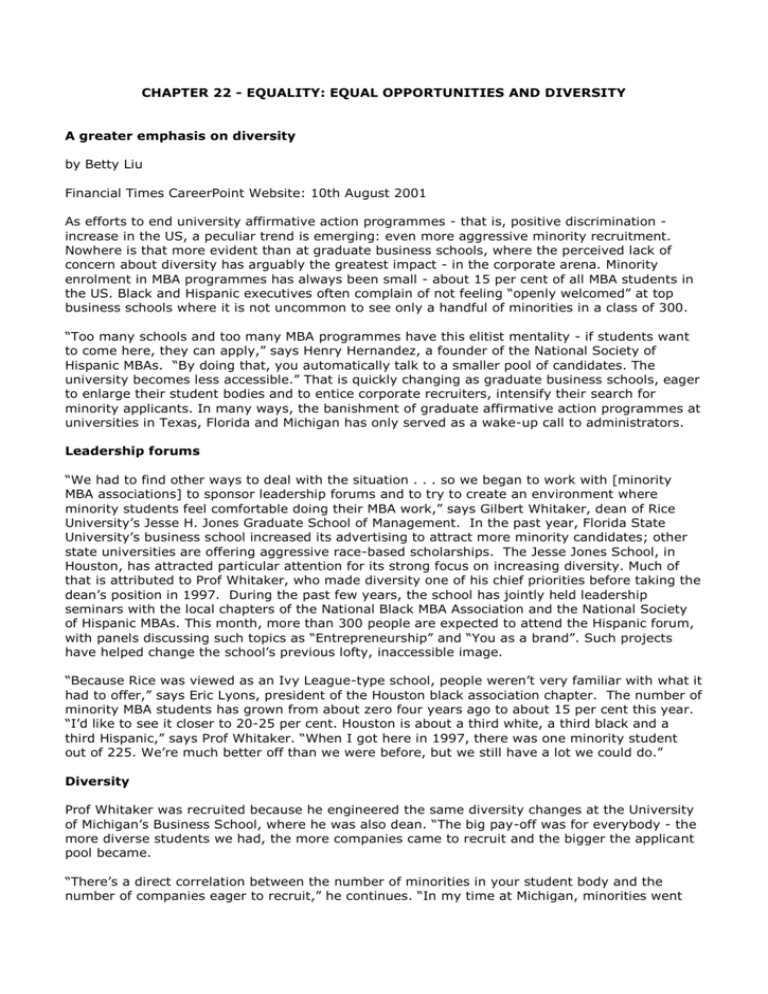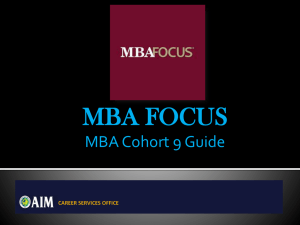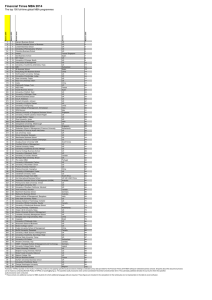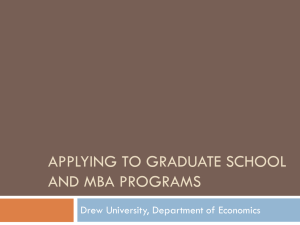CHAPTER 16 - STRATEGIC ASPECTS OF PERFORMANCE
advertisement

CHAPTER 22 - EQUALITY: EQUAL OPPORTUNITIES AND DIVERSITY A greater emphasis on diversity by Betty Liu Financial Times CareerPoint Website: 10th August 2001 As efforts to end university affirmative action programmes - that is, positive discrimination increase in the US, a peculiar trend is emerging: even more aggressive minority recruitment. Nowhere is that more evident than at graduate business schools, where the perceived lack of concern about diversity has arguably the greatest impact - in the corporate arena. Minority enrolment in MBA programmes has always been small - about 15 per cent of all MBA students in the US. Black and Hispanic executives often complain of not feeling “openly welcomed” at top business schools where it is not uncommon to see only a handful of minorities in a class of 300. “Too many schools and too many MBA programmes have this elitist mentality - if students want to come here, they can apply,” says Henry Hernandez, a founder of the National Society of Hispanic MBAs. “By doing that, you automatically talk to a smaller pool of candidates. The university becomes less accessible.” That is quickly changing as graduate business schools, eager to enlarge their student bodies and to entice corporate recruiters, intensify their search for minority applicants. In many ways, the banishment of graduate affirmative action programmes at universities in Texas, Florida and Michigan has only served as a wake-up call to administrators. Leadership forums “We had to find other ways to deal with the situation . . . so we began to work with [minority MBA associations] to sponsor leadership forums and to try to create an environment where minority students feel comfortable doing their MBA work,” says Gilbert Whitaker, dean of Rice University’s Jesse H. Jones Graduate School of Management. In the past year, Florida State University’s business school increased its advertising to attract more minority candidates; other state universities are offering aggressive race-based scholarships. The Jesse Jones School, in Houston, has attracted particular attention for its strong focus on increasing diversity. Much of that is attributed to Prof Whitaker, who made diversity one of his chief priorities before taking the dean’s position in 1997. During the past few years, the school has jointly held leadership seminars with the local chapters of the National Black MBA Association and the National Society of Hispanic MBAs. This month, more than 300 people are expected to attend the Hispanic forum, with panels discussing such topics as “Entrepreneurship” and “You as a brand”. Such projects have helped change the school’s previous lofty, inaccessible image. “Because Rice was viewed as an Ivy League-type school, people weren’t very familiar with what it had to offer,” says Eric Lyons, president of the Houston black association chapter. The number of minority MBA students has grown from about zero four years ago to about 15 per cent this year. “I’d like to see it closer to 20-25 per cent. Houston is about a third white, a third black and a third Hispanic,” says Prof Whitaker. “When I got here in 1997, there was one minority student out of 225. We’re much better off than we were before, but we still have a lot we could do.” Diversity Prof Whitaker was recruited because he engineered the same diversity changes at the University of Michigan’s Business School, where he was also dean. “The big pay-off was for everybody - the more diverse students we had, the more companies came to recruit and the bigger the applicant pool became. “There’s a direct correlation between the number of minorities in your student body and the number of companies eager to recruit,” he continues. “In my time at Michigan, minorities went from three to 19-20 per cent of the student body and the number of companies recruiting went from 150 to 400.” Corporations too are under pressure to diversify their management ranks. Last year, Coca-Cola settled a high-profile lawsuit alleging racial discrimination within the drinks group, a case that highlighted how the best companies may still fail to promote diversity. At the Jesse Jones School, the one-day seminars are sponsored by some of the biggest Fortune 500 companies - Shell Oil, Microsoft and Exxon Mobil - all of which are increasing their attempts at diversity. But the lack of minorities in MBA programmes is not always the fault of the university. Experts say young minority executives are not as inclined to enrol in MBA schools because they have not been coached to do so. “Many times, those [minority members] who have graduated college may be the first ones in their family to obtain a degree. They may not necessarily have the knowledge or experience that says: ‘In order for you to advance, to get to the next level in your career, you have to continue your education,’” says Mr Hernandez. “I was the first one in my family to get an engineering degree. I was mentored to think beyond just getting a bachelor’s degree and to go on for a master’s. But many people haven’t been mentored like that.” Groups such as the Consortium for Graduate Study have tried to increase the number of minority applicants by offering MBA fellowships at participating universities. Yet much of the burden lies with the universities themselves and their local recruiting efforts. The Hispanic and black associations note that the Jesse Jones School serves as a model for how a once lily-white MBA programme can be diversified in a meaningful way in a few years. “We thought if Rice was going to be a great university and ... a business school, it ought to be a great one. Otherwise, better to use the resources for something else,” says Prof Whitaker. He adds that it had been a vital element to increase student numbers. © FT CareerPoint 2001. Questions for discussion: 1) What methods identified in the article can be used to encourage non-white applicants on to MBAs? 2) How appropriate might these methods be for UK educational and professional bodies? 3) What is the value, in terms of equalising eventual employment experiences, of focusing on diversity in educational institutions? 4) What is the business case cited in this article?








